Yamaha VIRAGO 250 Manual
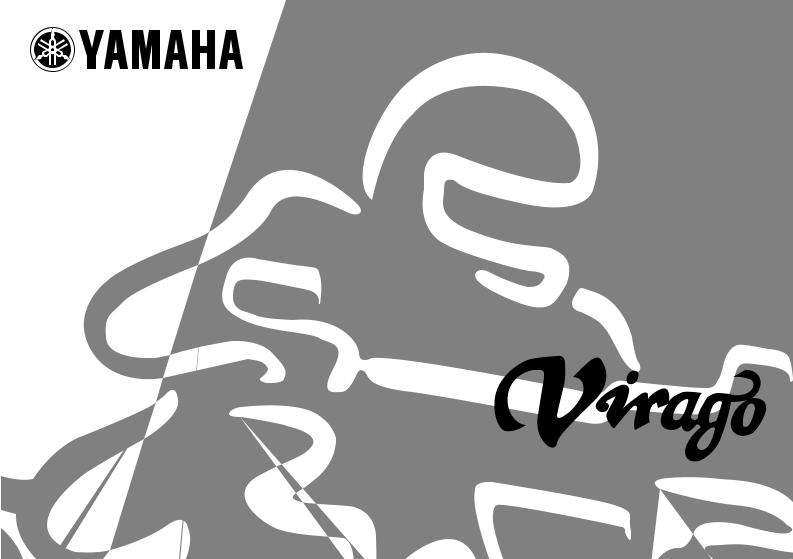
OWNER’S MANUAL
XV250P
XV250PC
LIT-11626-15-02 |
2UJ-28199-1A |
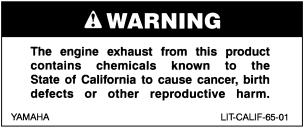
EAU03438
EAU00002 |
INTRODUCTION |
|
|
|
|
|
|
Congratulations on your purchase of the Yamaha XV250/XV250C. This model is the result of Yamaha’s vast experience in the production of fine sporting, touring, and pacesetting racing machines. It represents the high degree of craftsmanship and reliability that have made Yamaha a leader in these fields.
This manual will give you an understanding of the operation, inspection, and basic maintenance of this motorcycle. If you have any questions concerning the operation or maintenance of your motorcycle, please consult a Yamaha dealer.
The design and manufacture of this Yamaha motorcycle fully comply with the emissions standards for clean air applicable at the date of manufacture. Yamaha has met these standards without reducing the performance or economy of operation of the motorcycle. To maintain these high standards, it is important that you and your Yamaha dealer pay close attention to the recommended maintenance schedules and operating instructions contained within this manual.
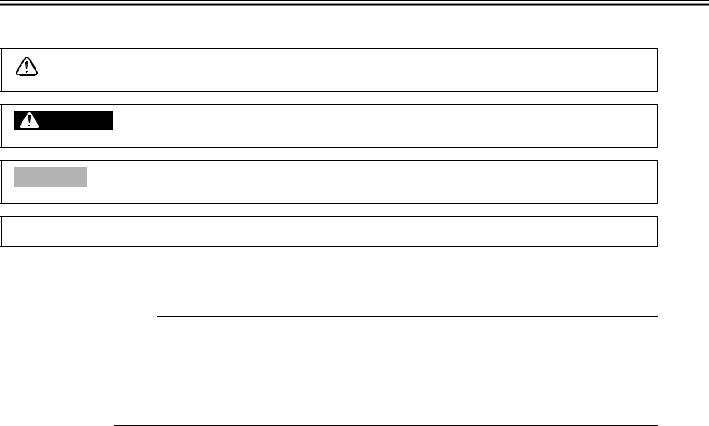
IMPORTANT MANUAL INFORMATION |
EAU00003 |
|
Particularly important information is distinguished in this manual by the following notations:
The Safety Alert Symbol means ATTENTION! BECOME ALERT! YOUR SAFETY IS
INVOLVED!
WARNING |
Failure to follow WARNING instructions could result in severe injury or death to the |
|
motorcycle operator, a bystander or a person inspecting or repairing the motorcycle. |
||
|
||
CAUTION: |
A CAUTION indicates special precautions that must be taken to avoid damage to the |
|
motorcycle. |
||
|
NOTE: A NOTE provides key information to make procedures easier or clearer.
NOTE:
●This manual should be considered a permanent part of this motorcycle and should remain with it even if the motorcycle is subsequently sold.
●Yamaha continually seeks advancements in product design and quality. Therefore, while this manual contains the most current product information available at the time of printing, there may be minor discrepancies between your motorcycle and this manual. If you have any questions concerning this manual, please consult your Yamaha dealer.

IMPORTANT MANUAL INFORMATION
EW000000
 WARNING
WARNING
PLEASE READ THIS MANUAL AND THE “YOU AND YOUR MOTORCYCLE: RIDING TIPS” BOOKLET CAREFULLY AND COMPLETELY BEFORE OPERATING THIS MOTORCYCLE. DO NOT ATTEMPT TO OPERATE THIS MOTORCYCLE UNTIL YOU HAVE ATTAINED ADEQUATE KNOWLEDGE OF ITS CONTROLS AND OPERATING FEATURES AND UNTIL YOU HAVE BEEN TRAINED IN SAFE AND PROPER RIDING TECHNIQUES. REGULAR INSPECTIONS AND CAREFUL MAINTENANCE, ALONG WITH GOOD RIDING SKILLS, WILL ENSURE THAT YOU SAFELY ENJOY THE CAPABILITIES AND THE RELIABILITY OF THIS MOTORCYCLE.
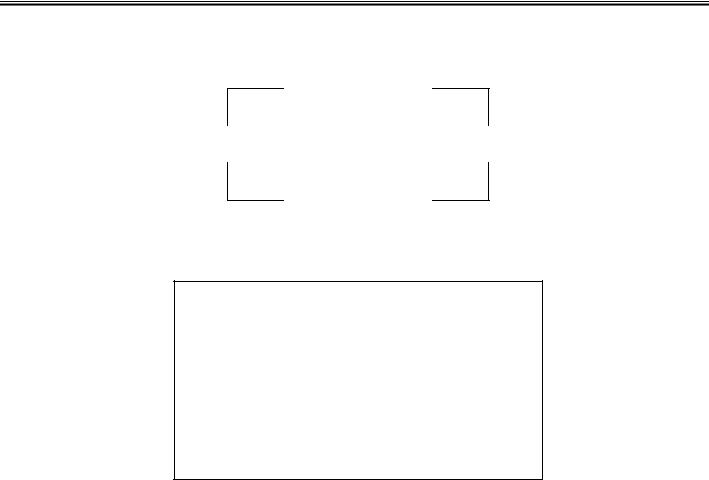
IMPORTANT MANUAL INFORMATION
AFFIX DEALER
LABEL HERE
EAU03336
XV250P/XV250PC
OWNER’S MANUAL
© 2001 by Yamaha Motor Corporation, U.S.A. 1st Edition, March 2001
All rights reserved.
Any reprinting or unauthorized use without the written permission of Yamaha Motor Corporation, U.S.A. is expressly prohibited.
Printed in Japan.
P/N LIT-11626-15-02
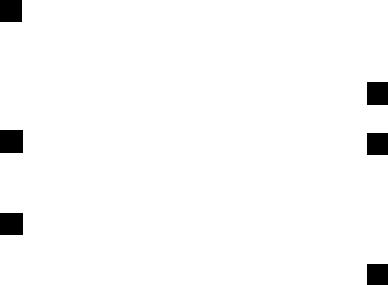
EAU00009 |
TABLE OF CONTENTS |
|
|
|
|
|
|
1 |
SAFETY INFORMATION .................................... |
1-1 |
|
Safe riding |
1-1 |
||
|
|||
|
Protective apparel .............................................. |
1-3 |
|
|
Modifications ...................................................... |
1-3 |
|
|
Loading and accessories ................................... |
1-3 |
|
|
Gasoline and exhaust gas.................................. |
1-5 |
|
|
Location of important labels .............................. |
1-7 |
|
2 |
DESCRIPTION ................................................... |
2-1 |
|
Left view |
2-1 |
||
|
|||
|
Right view .......................................................... |
2-2 |
|
|
Controls and instruments .................................. |
2-3 |
|
3 |
INSTRUMENT AND CONTROL FUNCTIONS ... |
3-1 |
|
Main switch |
3-1 |
||
|
|||
|
Indicator lights ................................................... |
3-1 |
|
|
Speedometer unit .............................................. |
3-2 |
|
|
Handlebar switches ........................................... |
3-2 |
|
|
Clutch lever ....................................................... |
3-3 |
|
|
Shift pedal ......................................................... |
3-3 |
|
|
Brake lever ........................................................ |
3-4 |
|
|
Brake pedal ....................................................... |
3-4 |
|
|
Fuel tank cap ..................................................... |
3-4 |
|
|
Fuel ................................................................... |
3-5 |
|
|
Fuel cock ........................................................... |
3-6 |
|
|
Starter (choke) lever .......................................... |
3-7 |
|
|
Steering lock ..................................................... |
3-8 |
|
|
Rider seat .......................................................... |
3-8 |
Helmet holder .................................................... |
3-9 |
Adjusting the shock absorber assemblies ....... |
3-10 |
Sidestand ........................................................ |
3-10 |
Ignition circuit cut-off system ........................... |
3-11 |
4 |
PRE-OPERATION CHECKS ............................... |
4-1 |
|
Pre-operation check list |
4-1 |
||
|
|||
5 |
OPERATION AND IMPORTANT RIDING |
|
|
POINTS |
5-1 |
||
|
|||
|
Starting and warming up a cold engine ............. |
5-2 |
|
|
Starting a warm engine ..................................... |
5-3 |
|
|
Shifting .............................................................. |
5-4 |
|
|
Engine break-in ................................................. |
5-5 |
|
|
Parking .............................................................. |
5-6 |
|
6 |
PERIODIC MAINTENANCE AND MINOR |
|
|
REPAIR |
6-1 |
||
|
|||
|
PERIODIC MAINTENANCE .............................. |
6-1 |
|
|
Owner’s tool kit .................................................. |
6-2 |
|
|
Periodic maintenance chart for the emission |
|
|
|
control system ............................................... |
6-3 |
|
|
General maintenance and lubrication chart ...... |
6-4 |
|
|
Checking the spark plugs .................................. |
6-6 |
|
|
Canister (for California only) ............................. |
6-8 |
|
|
Engine oil and oil filter element ......................... |
6-8 |
|
|
Cleaning the air filter element ......................... |
6-11 |
|
|
Adjusting the carburetor .................................. |
6-13 |
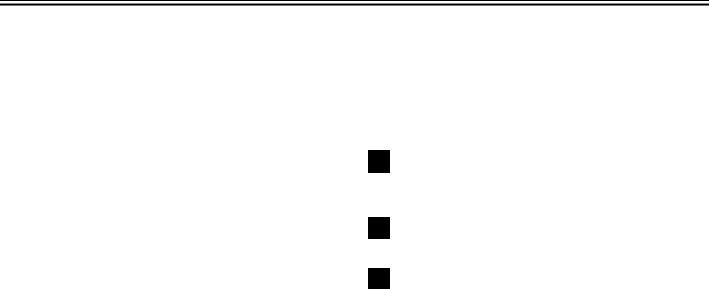
TABLE OF CONTENTS
Adjusting the throttle cable free play ............... |
6-13 |
Adjusting the valve clearance ......................... |
6-14 |
Tires ................................................................ |
6-14 |
Spoke wheels .................................................. |
6-16 |
Accessories and replacement parts ................ |
6-16 |
Adjusting the clutch lever free play ................. |
6-17 |
Adjusting the brake lever free play .................. |
6-18 |
Adjusting the brake pedal position and free |
|
play .............................................................. |
6-18 |
Adjusting the rear brake light switch ............... |
6-20 |
Checking the front brake pads and rear brake |
|
shoes ........................................................... |
6-20 |
Checking the brake fluid level ......................... |
6-21 |
Changing the brake fluid ................................. |
6-22 |
Drive chain slack ............................................. |
6-22 |
Lubricating the drive chain .............................. |
6-25 |
Checking and lubricating the cables ............... |
6-25 |
Checking and lubricating the throttle |
|
grip and cable .............................................. |
6-26 |
Checking and lubricating the brake and shift |
|
pedals .......................................................... |
6-26 |
Checking and lubricating the brake and clutch |
|
levers ........................................................... |
6-27 |
Checking and lubricating the sidestand .......... |
6-27 |
Checking the front fork .................................... |
6-28 |
Checking the steering ..................................... |
6-28 |
Checking the wheel bearings .......................... |
6-29 |
Battery ............................................................. |
6-30 |
Replacing the fuses ........................................ |
6-32 |
Replacing the headlight bulb ........................... |
6-32 |
Supporting the motorcycle .............................. |
6-34 |
Front wheel ..................................................... |
6-34 |
Rear wheel ...................................................... |
6-36 |
Troubleshooting .............................................. |
6-38 |
Troubleshooting chart ..................................... |
6-39 |
7 |
MOTORCYCLE CARE AND STORAGE ............. |
7-1 |
|
Care |
7-1 |
||
|
|||
|
Storage ............................................................. |
7-4 |
|
8 |
SPECIFICATIONS............................................... |
8-1 |
|
Specifications |
8-1 |
||
|
|||
9 |
CONSUMER INFORMATION.............................. |
9-1 |
|
Identification numbers |
9-1 |
||
|
|||
|
Key identification number .................................. |
9-1 |
|
|
Vehicle identification number ............................ |
9-1 |
|
|
Model label ........................................................ |
9-2 |
|
|
Reporting safety defects ................................... |
9-3 |
|
|
Motorcycle noise regulation .............................. |
9-4 |
|
|
Maintenance record .......................................... |
9-5 |
|
|
Street and enduro motorcycle limited |
|
|
|
warranty.......................................................... |
9-7 |
|
|
Yamaha extended service (Y.E.S.) ................... |
9-9 |

|
SAFETY INFORMATION |
EAU03633 |
|
|
|
|
|
|
|
|
|
|
MOTORCYCLES ARE SINGLE TRACK VEHICLES. THEIR SAFE USE AND OPERATION ARE DE- |
|
|
PENDENT UPON THE USE OF PROPER RIDING TECHNIQUES AS WELL AS THE EXPERTISE OF |
|
1 |
THE OPERATOR. EVERY OPERATOR SHOULD KNOW THE FOLLOWING REQUIREMENTS BE- |
|
FORE RIDING THIS MOTORCYCLE. |
|
|
HE OR SHE SHOULD:
1.OBTAIN THOROUGH INSTRUCTIONS FROM A COMPETENT SOURCE ON ALL ASPECTS OF MOTORCYCLE OPERATION.
2.OBSERVE THE WARNINGS AND MAINTENANCE REQUIREMENTS IN THE OWNER’S MANUAL.
3.OBTAIN QUALIFIED TRAINING IN SAFE AND PROPER RIDING TECHNIQUES.
4.OBTAIN PROFESSIONAL TECHNICAL SERVICE AS INDICATED BY THE OWNER’S MANUAL AND/OR WHEN MADE NECESSARY BY MECHANICAL CONDITIONS.
Safe riding
1.Always make pre-operation checks. Careful checks may help prevent an accident.
2.This motorcycle is designed to carry the operator and a passenger.
3.The failure of motorists to detect and recognize motorcycles in traffic is the predominating cause of automobile/motorcycle accidents. Many accidents have been caused by an automobile driver who did not see the motorcycle. Making yourself conspicuous appears to be very effective in reducing the
chance of this type of accident. Therefore:
a.Wear a brightly colored jacket.
b.Use extra caution when approaching and passing through intersections, since intersections are the most likely places for motorcycle accidents to occur.
c.Ride where other motorists can see you. Avoid riding in another motorist’s blind spot.
1-1


 SAFETY INFORMATION
SAFETY INFORMATION
4.Many motorcycle accidents involve inexperienced operators. In fact, many operators who have been involved in accidents do not even have a current motorcycle license.
a. Make sure that you are qualified and that you only lend your motorcycle to other qualified opera-
tors. |
1 |
b.Know your skills and limits. Staying within your limits may help you to avoid an accident.
c.We recommend that you practice riding your motorcycle where there is no traffic until you have become thoroughly familiar with the motorcycle and all of its controls.
5.Many motorcycle accidents have been caused by error of the motorcycle operator. A typical error made by the operator is veering wide on a turn due to EXCESSIVE SPEED or undercornering (insufficient lean angle for the speed).
a.Always obey the speed limit and never travel faster than warranted by road and traffic conditions.
b.Always signal before turning or changing lanes. Make sure that other motorists can see you.
6.The posture of the operator and passenger is important for proper control.
a.The operator should keep both hands on the handlebar and both feet on the operator footrests during operation to maintain control of the motorcycle.
b.The passenger should always hold onto the operator, seat strap, or grab bar, if equipped, with both hands and keep both feet on the passenger footrests.
c.Never carry a passenger unless he or she can firmly place both feet on the passenger footrests.
7.Never ride under the influence of alcohol or other drugs.
8.This motorcycle is designed for on-road use only, therefore, it is not suitable for off-road use.
1-2

|
SAFETY INFORMATION |
|
|
|
Protective apparel |
|
The majority of fatalities from motorcycle accidents are the result of head injuries. The use of a safety |
1 |
helmet is the single most critical factor in the prevention or reduction of head injuries. |
1.Always wear an approved helmet.
2.Wear a face shield or goggles. Wind in your unprotected eyes could contribute to an impairment of vision which could delay seeing a hazard.
3.The use of a jacket, heavy boots, trousers, gloves, etc., is effective in preventing or reducing abrasions or lacerations.
4.Never wear loose-fitting clothes, otherwise they could catch on the control levers, footrests, or wheels and cause injury or an accident.
5.Never touch the engine or exhaust system during or after operation. They become very hot and can cause burns. Always wear protective clothing that covers your legs, ankles, and feet.
6.Passengers should also observe the precautions mentioned above.
Modifications
Modifications made to this motorcycle not approved by Yamaha, or the removal of original equipment, may render the motorcycle unsafe for use and may cause severe personal injury. Modifications may also make your motorcycle illegal to use.
Loading and accessories
Adding accessories or cargo to your motorcycle can adversely affect stability and handling if the weight distribution of the motorcycle is changed. To avoid the possibility of an accident, use extreme caution when adding cargo or accessories to your motorcycle. Use extra care when riding a motorcycle that has added cargo or accessories. Here are some general guidelines to follow if loading cargo or adding accessories to your motorcycle:
1-3


 SAFETY INFORMATION
SAFETY INFORMATION
Loading
The total weight of the operator, passenger, accessories and cargo must not exceed the maximum load limit of XV250: 432 lb (196 kg) / XV250C: 430 lb (195 kg). When loading within this weight limit, keep the 1 following in mind:
1.Cargo and accessory weight should be kept as low and close to the motorcycle as possible. Make sure to distribute the weight as evenly as possible on both sides of the motorcycle to minimize imbalance or instability.
2.Shifting weights can create a sudden imbalance. Make sure that accessories and cargo are securely attached to the motorcycle before riding. Check accessory mounts and cargo restraints frequently.
3.Never attach any large or heavy items to the handlebar, front fork, or front fender. These items, including such cargo as sleeping bags, duffel bags, or tents, can create unstable handling or slow steering response.
Accessories
Genuine Yamaha accessories have been specifically designed for use on this motorcycle. Since Yamaha cannot test all other accessories that may be available, you must personally be responsible for the proper selection, installation and use of non-Yamaha accessories. Use extreme caution when selecting and installing any accessories.
Keep the following guidelines in mind, as well as those provided under “Loading” when mounting accessories.
1.Never install accessories or carry cargo that would impair the performance of your motorcycle. Carefully inspect the accessory before using it to make sure that it does not in any way reduce ground clearance or cornering clearance, limit suspension travel, steering travel or control operation, or obscure lights or reflectors.
1-4


 SAFETY INFORMATION
SAFETY INFORMATION
a.Accessories fitted to the handlebar or the front fork area can create instability due to improper weight distribution or aerodynamic changes. If accessories are added to the handlebar or front
fork area, they must be as lightweight as possible and should be kept to a minimum.
1 b. Bulky or large accessories may seriously affect the stability of the motorcycle due to aerodynamic effects. Wind may attempt to lift the motorcycle, or the motorcycle may become unstable in cross winds. These accessories may also cause instability when passing or being passed by large vehicles.
c.Certain accessories can displace the operator from his or her normal riding position. This improper position limits the freedom of movement of the operator and may limit control ability, therefore, such accessories are not recommended.
2.Use caution when adding electrical accessories. If electrical accessories exceed the capacity of the motorcycle’s electrical system, an electric failure could result, which could cause a dangerous loss of lights or engine power.
Gasoline and exhaust gas
1.GASOLINE IS HIGHLY FLAMMABLE:
a.Always turn the engine off when refueling.
b.Take care not to spill any gasoline on the engine or exhaust system when refueling.
c.Never refuel while smoking or in the vicinity of an open flame.
2.Never start the engine or let it run for any length of time in a closed area. The exhaust fumes are poisonous and may cause loss of consciousness and death within a short time. Always operate your motorcycle in an area that has adequate ventilation.
3.Always turn the engine off before leaving the motorcycle unattended and remove the key from the main switch. When parking the motorcycle, note the following:
1-5


 SAFETY INFORMATION
SAFETY INFORMATION
a.The engine and exhaust system may be hot, therefore, park the motorcycle in a place where pedestrians or children are not likely to touch these hot areas.
b.Do not park the motorcycle on a slope or soft ground, otherwise it may fall over.
c. Do not park the motorcycle near a flammable source (e.g. a kerosene heater, or near an open 1 flame), otherwise it could catch fire.
4.When transporting the motorcycle in another vehicle, make sure that it is kept upright and that the fuel cock is turned to “ON” or “RES” (for vacuum type) / “OFF” (for manual type). If it should lean over, gasoline may leak out of the carburetor or fuel tank.
5.If you should swallow any gasoline, inhale a lot of gasoline vapor, or allow gasoline to get into your eyes, see your doctor immediately. If any gasoline spills on your skin or clothing, immediately wash the affected area with soap and water and change your clothes.
1-6
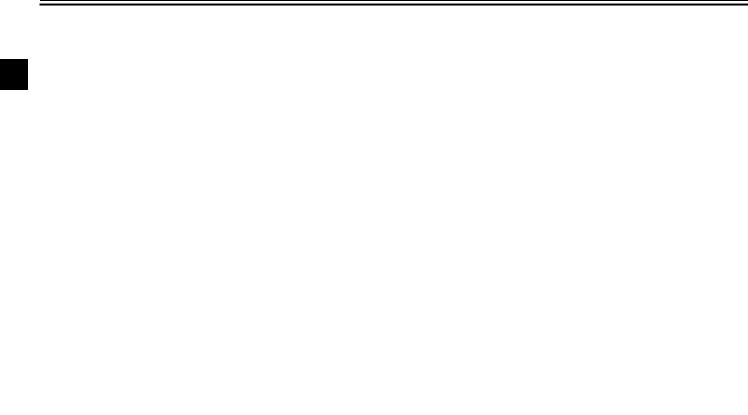

 SAFETY INFORMATION
SAFETY INFORMATION
EAU02977
Location of important labels
Please read the following important labels carefully before operating this motorcycle.
1
1-7


 SAFETY INFORMATION
SAFETY INFORMATION
1 |
3 |
1
2 |
4 California only |
1-8
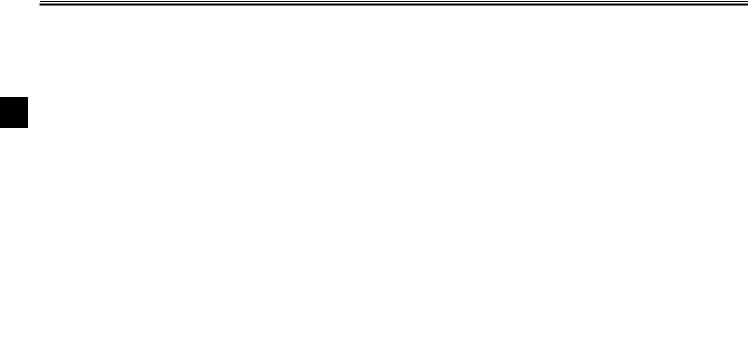
DESCRIPTION |
EAU00026 |
|
Left view
2
1. Headlight |
(page 6-32) |
6. Shock absorber assembly spring |
|
2. Fuel tank |
(page 3-5) |
preload adjusting ring |
(page 3-10) |
3. Battery |
(page 6-30) |
7. Main switch |
(page 3-1) |
4. Fuses |
(page 6-32) |
8. Fuel cock |
(page 3-6) |
5. Helmet holder |
(page 3-9) |
9. Shift pedal |
(page 3-3) |
2-1

DESCRIPTION
Right view
2
10. Tail/brake light |
|
14. Front turn signal/position light |
|
11. Rear turn signal light |
|
15. Brake pedal |
(page 3-4) |
12. Rider seat |
(page 3-8) |
16. Footrest |
|
13. Air filter element |
(page 6-11) |
17. Shock absorber assembly spring |
|
|
|
preload adjusting ring |
(page 3-10) |
2-2
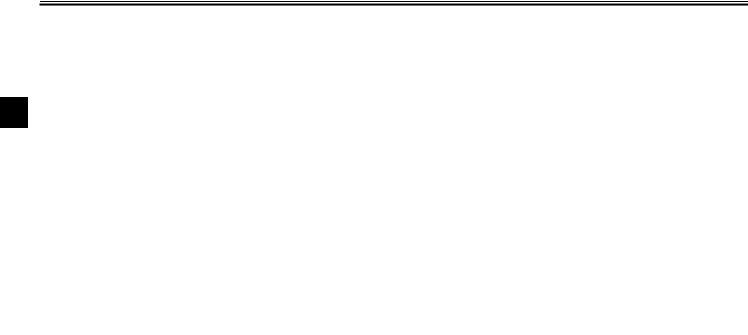
DESCRIPTION
Controls and instruments
2
1. Clutch lever |
(page 3-3) |
5. Right handlebar switches |
(page 3-3) |
2. Left handlebar switches |
(page 3-2) |
6. Brake lever |
(page 3-4) |
3. Speedometer unit |
(page 3-2) |
7. Throttle grip |
(page 6-13) |
4. Indicator lights |
(page 3-1) |
8. Fuel tank cap |
(page 3-4) |
2-3

EAU00027 |
INSTRUMENT AND CONTROL FUNCTIONS |
|
|
|
|
|
|
EAU00050
P (Parking)
The taillight and position lights are on, but all other electrical systems are off. The key can be removed.
The key must be pushed in from the “OFF” position to be turned to “P”.
Main switch
ECA00043
CAUTION:
Do not use the parking position for EAU00028 an extended length of time, other-
wise the battery may discharge.
3
1.High beam indicator light “HIGH BEAM”
2.Neutral indicator light “NEUTRAL”
3.Turn signal indicator light “TURN”
The main switch controls the ignition and lighting systems. The various main switch positions are described below.
EAU00032
ON
All electrical systems are supplied with power, the headlight, meter lighting, taillight and front position lights come on, and the engine can be started. The key cannot be removed.
EAU00056
Indicator lights
EAU00064
High beam indicator light “HIGH BEAM”
This indicator light comes on when the high beam of the headlight is switched on.
EAU00062
Neutral indicator light “NEUTRAL”
This indicator light comes on when the transmission is in the neutral position.
EAU00059
EAU00038
OFF
All electrical systems are off. The key can be removed.
Turn signal indicator light “TURN”
This indicator light flashes when the turn signal switch is pushed to the left or right.
3-1

INSTRUMENT AND CONTROL FUNCTIONS
3
1.Odometer
2.Tripmeter
3.Reset knob
4.Speedometer
EAU00095
Speedometer unit
The speedometer unit is equipped with a speedometer, an odometer and a tripmeter. The speedometer shows riding speed. The odometer shows the total distance traveled. The tripmeter shows the distance traveled since it was last set to zero with the reset knob. The tripmeter can be used to estimate the distance that can be traveled with a full tank of fuel. This information will enable you to plan future fuel stops.
1.Dimmer switch “LIGHTS”
2.Turn signal switch “TURN”
3.Horn switch “HORN”
EAU00118
Handlebar switches
EAU00122
Dimmer switch “LIGHTS”
Set the switch to “HI” for the high beam and to “LO” for the low beam.
EAU00125
Turn signal switch “TURN”
To signal a right-hand turn, push this switch to the right. To signal a left-hand turn, push this switch to the left. When released, the switch returns to the cen-
ter position. To cancel the turn signal lights, push the switch in after it has returned to the center position.
EAU00130
Horn switch “HORN”
Press this switch to sound the horn.
3-2

INSTRUMENT AND CONTROL FUNCTIONS
1.Engine stop switch “ENGINE STOP”
2.Start switch “START”
EAU00137
Engine stop switch “ENGINE STOP”
Set this switch to “OFF” to stop the engine in case of an emergency, such as when the motorcycle overturns or when the throttle cable is stuck.
EAU00141
Start switch “START”
Push this switch to crank the engine with the starter.
EC000005
CAUTION:
See page 5-2 for starting instructions prior to starting the engine.
1. Clutch lever
EAU00152
Clutch lever
The clutch lever is located at the left handlebar grip. To disengage the clutch, pull the lever toward the handlebar grip. To engage the clutch, release the lever. The lever should be pulled rapidly and released slowly for smooth clutch operation.
The clutch lever is equipped with a clutch switch, which is part of the ignition circuit cut-off system. (See page 3-11 for an explanation of the ignition circuit cut-off system.)
3
1. Shift pedal
EAU00157
Shift pedal
The shift pedal is located on the left side of the engine and is used in combination with the clutch lever when shifting the gears of the 5-speed con- stant-mesh transmission equipped on this motorcycle.
3-3

INSTRUMENT AND CONTROL FUNCTIONS
3
1. Brake lever
EAU00158
Brake lever
The brake lever is located at the right handlebar grip. To apply the front brake, pull the lever toward the handlebar grip.
1. Brake pedal
EAU00162
Brake pedal
The brake pedal is on the right side of the motorcycle. To apply the rear brake, press down on the brake pedal.
1.Fuel tank cap
2.Unlock.
EAU03756
Fuel tank cap
To remove the fuel tank cap
Insert the key into the lock and turn it 1/4 turn clockwise. The lock will be released and the fuel tank cap can be removed.
To install the fuel tank cap
1.Push the fuel tank cap into position with the key inserted in the lock.
2.Turn the key counterclockwise to the original position, and then remove it.
3-4
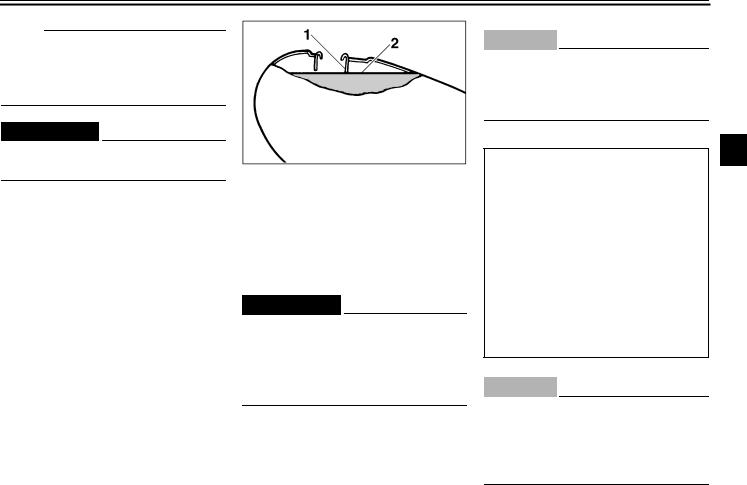
INSTRUMENT AND CONTROL FUNCTIONS
NOTE:
The fuel tank cap cannot be installed unless the key is in the lock. In addition, the key cannot be removed if the cap is not properly installed and locked.
EWA00032
 WARNING
WARNING
Make sure that the fuel tank cap is properly installed before riding.
1.Fuel tank filler tube
2.Fuel level
EAU03753
Fuel
Make sure that there is sufficient fuel in the tank. Fill the fuel tank to the bottom of the filler tube as shown.
EW000130
 WARNING
WARNING
●Do not overfill the fuel tank, otherwise it may overflow when the fuel warms up and expands.
●Avoid spilling fuel on the hot engine.
EAU00185
CAUTION:
@
Immediately wipe off spilled fuel with a clean, dry, soft cloth, since fuel may deteriorate painted surfaces or plastic parts.
@
EAU04194
3
Recommended fuel: UNLEADED FUEL ONLY
Fuel tank capacity: Total amount:
XV250 9.5 L
(2.1 Imp gal, 2.5 US gal) XV250C
9.2 L
(2.0 lmp gal, 2.4 US gal) Reserve amount:
2.6 L (0.6 Imp gal, 0.7 US gal)
ECA00102
CAUTION:
_
Use only unleaded gasoline. The use of leaded gasoline will cause severe damage to the engine internal parts such as valves, piston rings, exhaust system, etc.
_
3-5

INSTRUMENT AND CONTROL FUNCTIONS
Your Yamaha engine has been designed to use regular unleaded gasoline with a pump octane number [(R+M)/2] of 86 or higher, or a research octane number of 91 or higher. If knocking (or pinging) occurs, use a gasoline of a different brand or premi-
3um unleaded fuel. Use of unleaded fuel will extend spark plug life and reduce maintenance costs.
Gasohol
There are two types of gasohol: gasohol containing ethanol and that containing methanol. Gasohol containing ethanol can be used if the ethanol content does not exceed 10%. Gasohol containing methanol is not recommended by Yamaha because it can cause damage to the fuel system or vehicle performance problems.
ON: normal position
1. Arrow mark positioned over “ON”
EAU03236
Fuel cock
This motorcycle is equipped with a negative pressure fuel cock. The fuel cock supplies fuel from the tank to the carburetors while also filtering it.
The fuel cock lever positions are explained as follows and shown in the illustrations.
ON
With the fuel cock lever in this position, fuel flows to the carburetor when the engine is running. Turn the fuel cock lever to this position when starting the engine and riding.
RES: reserve position
1. Arrow mark positioned over “RES”
RES
This indicates reserve. With the fuel cock lever in this position, the fuel reserve is made available. Quickly turn the fuel cock lever to this position if you run out of fuel while riding, otherwise the engine may stall and will have to be primed (see “PRI”). After turning the fuel cock lever to “RES”, refuel as soon as possible and be sure to turn the fuel cock lever back to “ON”!
3-6

INSTRUMENT AND CONTROL FUNCTIONS
PRI: priming position
1. Arrow mark positioned over “PRI”
PRI
This indicates prime. With the fuel cock lever in this position, the engine can be “primed”. Turn the fuel cock lever to this position when the engine has been allowed to run out of fuel. This sends fuel directly to the carburetor, which will make starting easier. After the engine has started, be sure to turn the lever to “ON” (or “RES” if you have not refueled yet).
3
1. Starter (choke) lever
EAU00211
Starter (choke) lever
Starting a cold engine requires a richer air-fuel mixture, which is supplied by the starter (choke).
Move the lever in direction a to turn on the starter (choke).
Move the lever in direction b to turn off the starter (choke).
3-7

INSTRUMENT AND CONTROL FUNCTIONS
3
1. Steering lock
To unlock the steering
1.Open the steering lock cover, and then insert the key.
2.Push the key in, turn it 1/8 turn counterclockwise so that it moves out, and then release it.
3.Remove the key, and then close the lock cover.
1. Bolt (× 2)
|
EAU02934 |
EAU01072 |
Steering lock |
Rider seat |
|
To lock the steering |
To remove the rider seat |
|
1. |
Turn the handlebar all the way to |
Remove the bolts, and then pull the rid- |
|
right. |
er seat off. |
2. |
Open the steering lock cover, and |
|
|
then insert the key. |
|
3. |
Turn the key 1/8 turn counter- |
|
|
clockwise, push it in while turning |
|
|
the handlebar slightly to the left, |
|
|
and then turn the key 1/8 turn |
|
|
clockwise. |
|
4. |
Check that the steering is locked, |
|
|
remove the key, and then close |
|
|
the lock cover. |
|
3-8

INSTRUMENT AND CONTROL FUNCTIONS
1.Projection
2.Seat holder
To install the rider seat
1.Insert the projection on the front of the rider seat into the seat holder as shown.
2.Place the rider seat in the original position, and then tighten the bolts.
NOTE:
Make sure that the rider seat is properly secured before riding.
3
1.Helmet holder
2.Unlock.
EAU00260
Helmet holder
To open the helmet holder, insert the key into the lock, and then turn the key as shown.
To lock the helmet holder, place it in the original position, and then remove the key.
EW000030
 WARNING
WARNING
Never ride with a helmet attached to the helmet holder, since the helmet may hit objects, causing loss of control and possibly an accident.
3-9
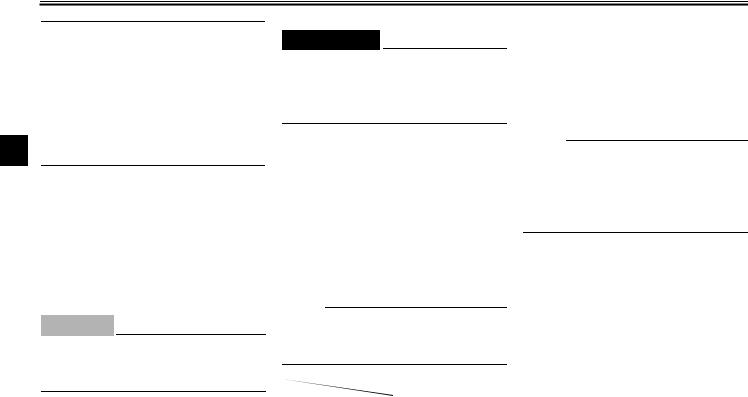
INSTRUMENT AND CONTROL FUNCTIONS
3
1.Spring preload adjusting ring
2.Position indicator
EAU00300
Adjusting the shock absorber assemblies
Each shock absorber assembly is equipped with a spring preload adjusting ring.
EC000015
CAUTION:
Never attempt to turn an adjusting mechanism beyond the maximum or minimum settings.
EW000040
 WARNING
WARNING
Always adjust both shock absorber assemblies equally, otherwise poor handling and loss of stability may result.
Adjust the spring preload as follows. To increase the spring preload and thereby harden the suspension, turn the adjusting ring on each shock absorber assembly in direction a. To decrease the spring preload and thereby soften the suspension, turn the adjusting ring on each shock absorber assembly in direction b.
NOTE:
Align the appropriate notch in the adjusting ring with the position indicator on the shock absorber.
|
Setting |
|
|
Minimum (soft) |
1 |
|
|
Standard |
2 |
|
|
Maximum (hard) |
5 |
|
|
EAU00330
Sidestand
The sidestand is located on the left side of the frame. Raise the sidestand or lower it with your foot while holding the motorcycle upright.
NOTE:
@
The built-in sidestand switch is part of the ignition circuit cut-off system, which cuts the ignition in certain situations. (See further down for an explanation of the ignition circuit cut-off system.)
@
3-10
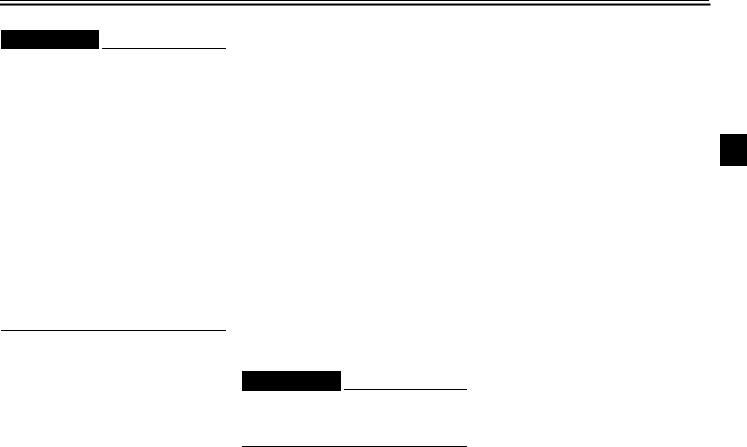
INSTRUMENT AND CONTROL FUNCTIONS
EW000044
 WARNING
WARNING
The motorcycle must not be ridden with the sidestand down, or if the sidestand cannot be properly moved up (or does not stay up), otherwise the sidestand could contact the ground and distract the operator, resulting in a possible loss of control. Yamaha’s ignition circuit cut-off system has been designed to assist the operator in fulfilling the responsibility of raising the sidestand before starting off. Therefore, check this system regularly as described below and have a Yamaha dealer repair it if it does not function properly.
EAU03720
Ignition circuit cut-off system
The ignition circuit cut-off system (comprising the sidestand switch, clutch switch and neutral switch) has the following functions.
● It prevents starting when the trans-
mission is in gear and the side-
3
stand is up, but the clutch lever is not pulled.
●It prevents starting when the transmission is in gear and the clutch lever is pulled, but the sidestand is still down.
●It cuts the running engine when
the transmission is in gear and the sidestand is moved down.
Periodically check the operation of the ignition circuit cut-off system according to the following procedure.
EW000045
 WARNING
WARNING
If a malfunction is noted, have a Yamaha dealer check the system before riding.
3-11
